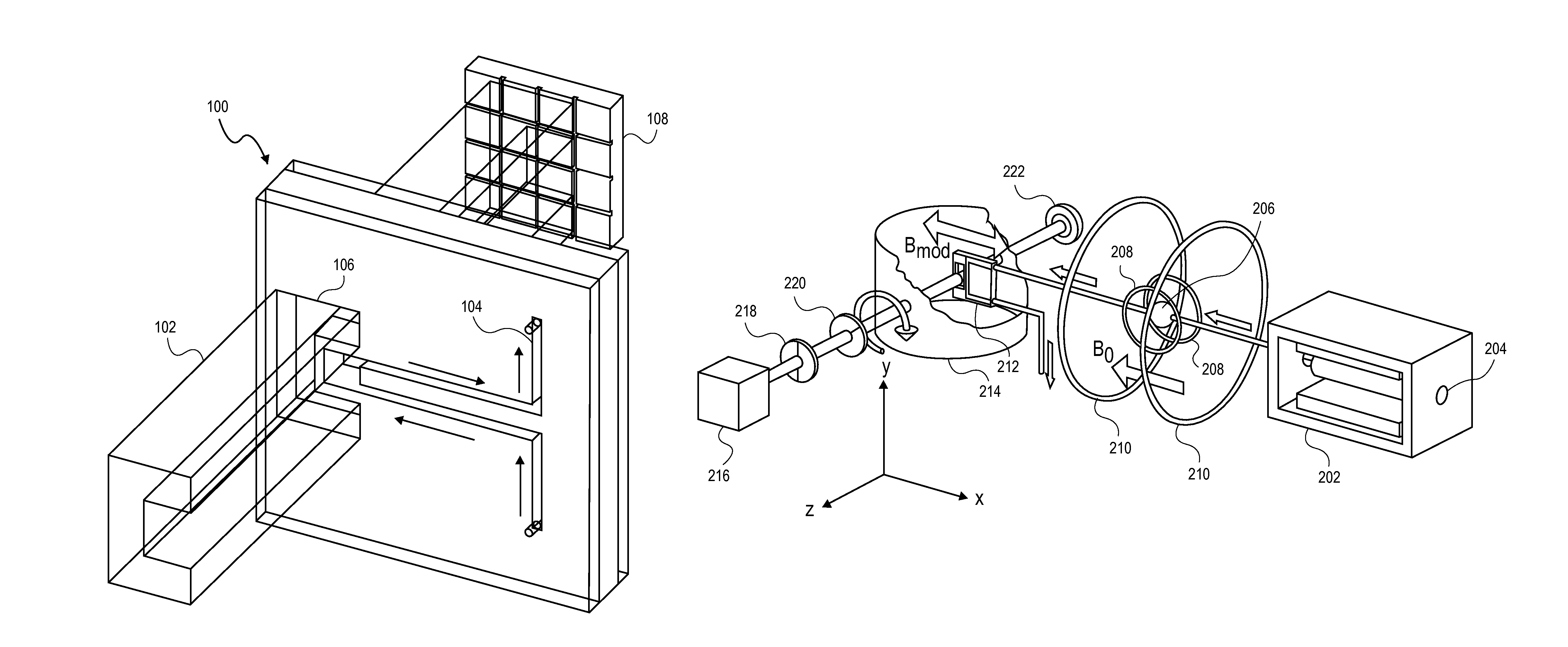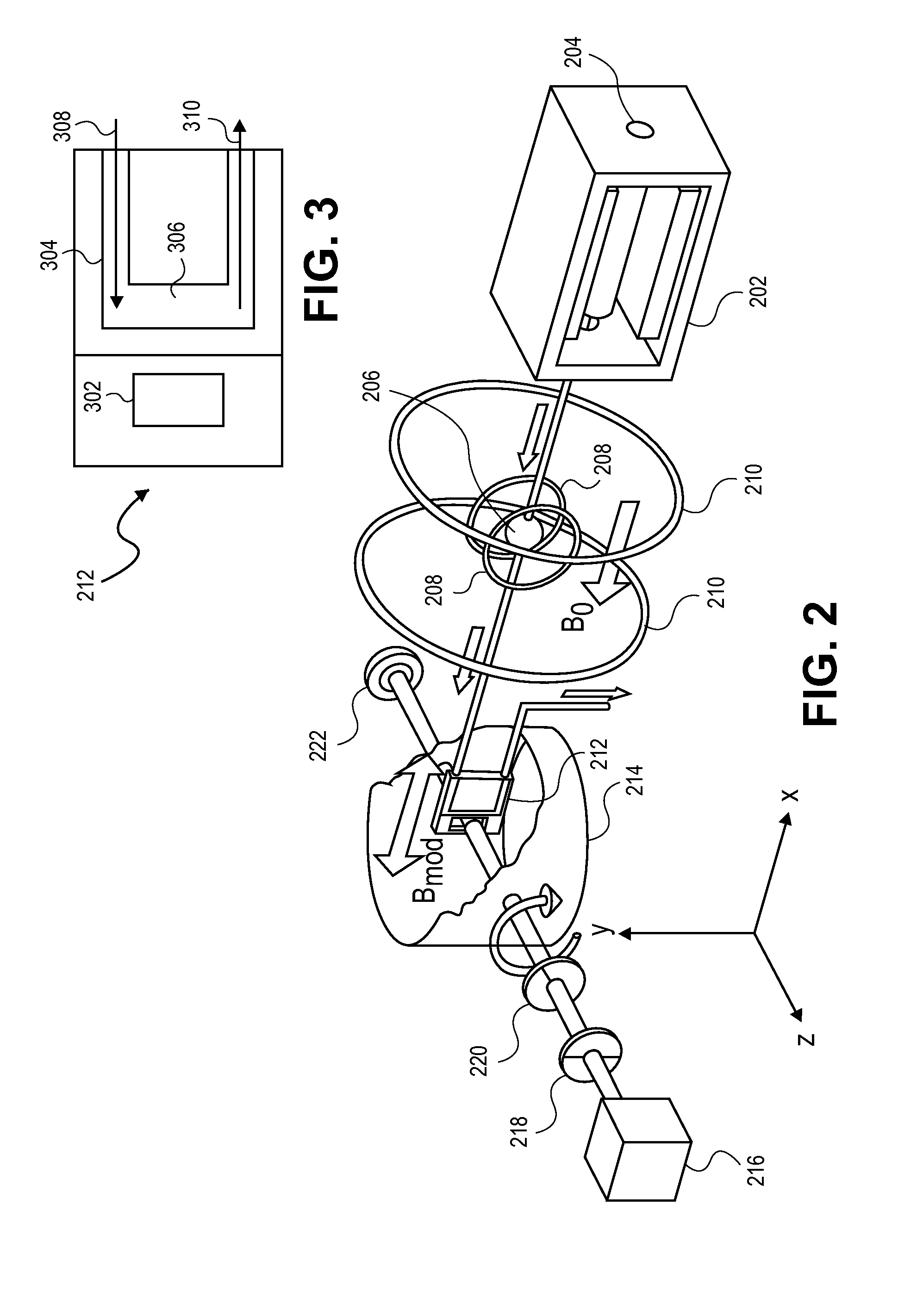Integrated microchip incorporating atomic magnetometer and microfluidic channel for NMR and MRI
a microchip and magnetometer technology, applied in the field of nmr and mri, can solve the problems of large mri instruments, cumbersome operation, and high cost, and achieve the effects of reducing cost, improving sensitivity to very small samples, and high scalabl
- Summary
- Abstract
- Description
- Claims
- Application Information
AI Technical Summary
Benefits of technology
Problems solved by technology
Method used
Image
Examples
Embodiment Construction
[0016]The design and use of laser based atomic magnetometers in the context of NMR and MRI is disclosed in US published patent application US 2007 / 0205767, the contents of which is hereby incorporated by reference in its entirety. In that application, a laser based atomic magnetometer apparatus is described for the measurement of magnetic fields, the apparatus including a plurality of alkali vapor cells to detect magnetic fields, a laser source optically coupled to the alkali vapor cells, and a signal detector that measures the laser source after being coupled to the alkali vapor cells. There too, it was disclosed that a single alkali vapor cell may be used for nuclear magnetic resonance detection by pre-polarizing the nuclear spins of an analyte, encoding spectroscopic and / or spatial information, and detecting the flux in NMR signals from the analyte using a laser based atomic magnetometer apparatus.
[0017]By way of this invention, the system has been miniaturized further by incorpo...
PUM
 Login to View More
Login to View More Abstract
Description
Claims
Application Information
 Login to View More
Login to View More - R&D
- Intellectual Property
- Life Sciences
- Materials
- Tech Scout
- Unparalleled Data Quality
- Higher Quality Content
- 60% Fewer Hallucinations
Browse by: Latest US Patents, China's latest patents, Technical Efficacy Thesaurus, Application Domain, Technology Topic, Popular Technical Reports.
© 2025 PatSnap. All rights reserved.Legal|Privacy policy|Modern Slavery Act Transparency Statement|Sitemap|About US| Contact US: help@patsnap.com



